18.HTTP协议(二)
一.概念回顾
建议先学上篇博客,再向下学习,上篇博客的链接如下:
https://blog.csdn.net/weixin_60668256/article/details/154835397?fromshare=blogdetail&sharetype=blogdetail&sharerId=154835397&sharerefer=PC&sharesource=weixin_60668256&sharefrom=from_link
二.http请求与响应的格式
1.http请求

2.http响应

三.http协议定制
#pragma once#include <iostream>
#include <string>
#include <vector>
#include <sstream>
#include "Common.hpp"const std::string Sep = "\r\n";
const std::string LineSep = " ";
const std::string BlankLine = Sep;class HttpRequest
{
public:HttpRequest(){}~HttpRequest(){}void Deserialize(std::string& request_str){std::cout << "#############################" << std::endl;std::cout << "解析之前 request_str: \n" << request_str;if(ParseOneLine(request_str,&_req_line,Sep)){//提取请求行内的详细字段ParseReqLine(_req_line,LineSep);}std::cout << "解析之后 request_str: \n" << request_str;Print();std::cout << "#############################" << std::endl;}void Print(){std::cout << "#############################" << std::endl;std::cout << "_method: " << _method << std::endl;std::cout << "_uri: " << _uri << std::endl;std::cout << "_version: " << _version << std::endl;}
private:void ParseReqLine(std::string& _req_line,const std::string sep){std::stringstream ss(_req_line);ss >> _method >> _uri >> _version;}
private:std::string _req_line;std::vector<std::string> _req_header;std::string _blank_line;std::string _body;//反序列化的过程中,细化我们解析的字段std::string _method;std::string _uri;std::string _version;
};class HttpResponse
{
private:std::string _resp_line;std::vector<std::string> _resp_header;std::string _blank_line;std::string _body;
};
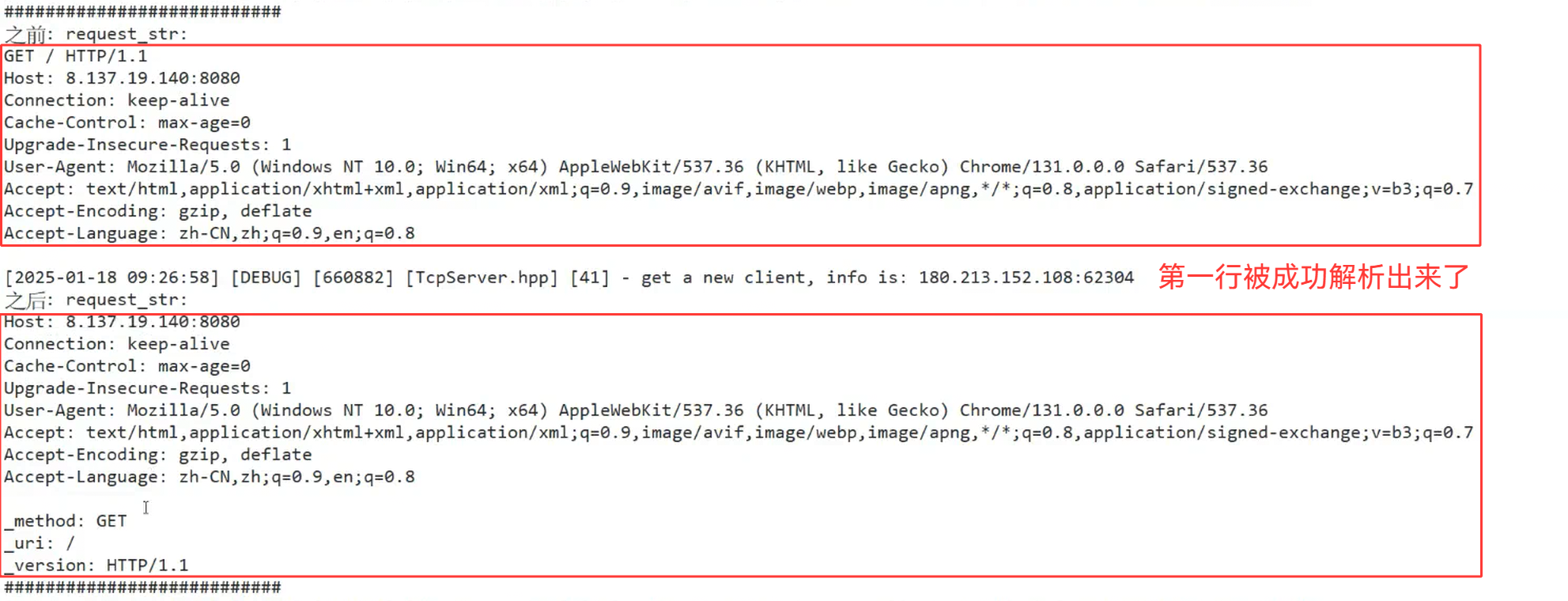

1.Deserialize函数的实现
void Deserialize(std::string& request_str){if(ParseOneLine(request_str,&_req_line,Sep)){//提取请求行内的详细字段ParseReqLine(_req_line,LineSep);ParseHeader(request_str);_body = request_str;}}
a.ParseOneLine(请求行的拆分)
//1.正常字符串
//2.true && 空
//3.false && 空
bool ParseOneLine(std::string& str,std::string* out,const std::string& sep)
{auto pos = str.find(sep);if(pos == std::string::npos){return false;}*out = str.substr(0,pos);str.erase(0,pos+sep.size());return true;
}
b.ParseHeader(请求报头的拆分)
bool ParseHeader(std::string& request_str){std::string line;while(true){bool r = ParseOneLine(request_str,&line,Sep);if(r && !line.empty()){_req_header.push_back(line);}else if(r && line.empty()){_blank_line = Sep;break;}else{return false;}}return true;}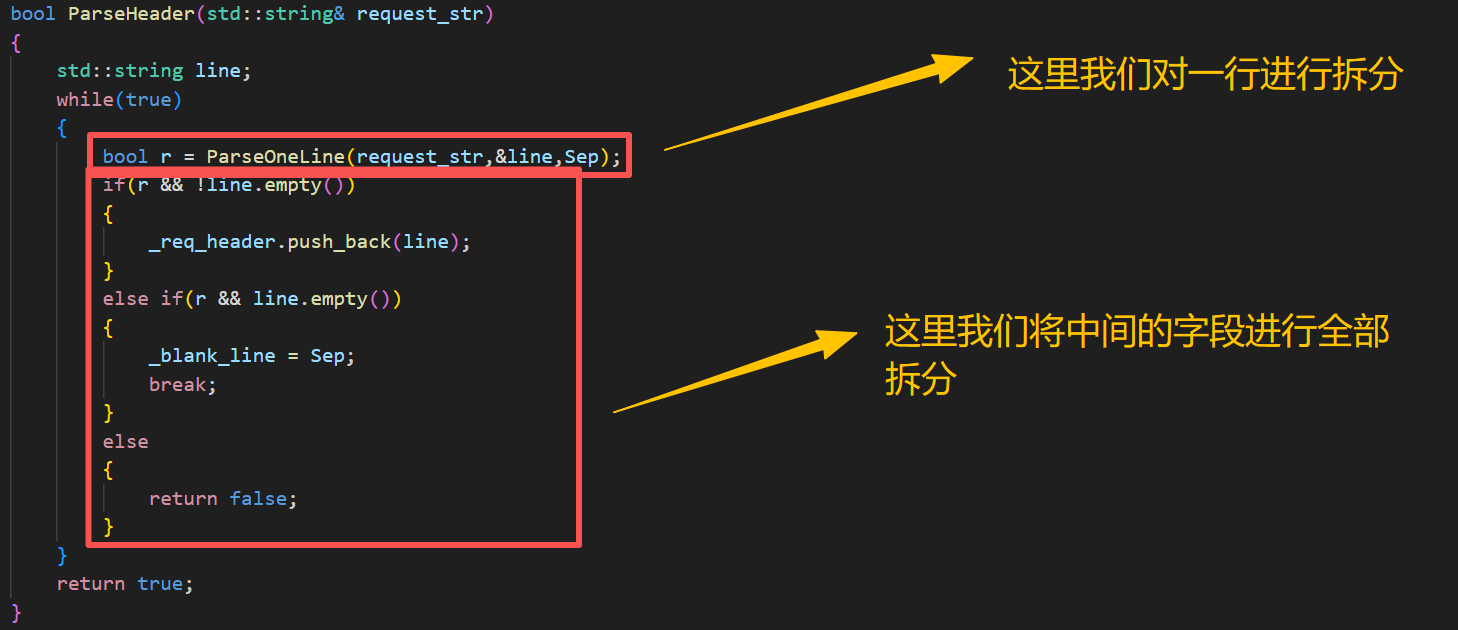
c.Print()的实现
void Print(){std::cout << "_method: " << _method << std::endl;std::cout << "_uri: " << _uri << std::endl;std::cout << "_version: " << _version << std::endl;for(auto& line : _req_header){std::cout << line << "\n" << std::endl;}std::cout << "_blank_line: " << _blank_line << std::endl;std::cout << "body: " << _body << std::endl;}

d.ParseHeaderkv()的实现
bool ParseHeaderkv(){std::string key,value;for(auto& header : _req_header){//Connection: keep-aliveif(SplitString(header,HeaderLineSep,&key,&value)){_header_kv.insert(std::make_pair(key,value));}}return true;}

e.Request总代码
class HttpRequest
{
public:HttpRequest(){}~HttpRequest(){}bool ParseHeaderkv(){std::string key,value;for(auto& header : _req_header){//Connection: keep-aliveif(SplitString(header,HeaderLineSep,&key,&value)){_header_kv.insert(std::make_pair(key,value));}}return true;}bool ParseHeader(std::string& request_str){std::string line;while(true){bool r = ParseOneLine(request_str,&line,Sep);if(r && !line.empty()){_req_header.push_back(line);}else if(r && line.empty()){_blank_line = Sep;break;}else{return false;}}ParseHeaderkv();return true;}void Deserialize(std::string& request_str){if(ParseOneLine(request_str,&_req_line,Sep)){//提取请求行内的详细字段ParseReqLine(_req_line,LineSep);ParseHeader(request_str);_body = request_str;}}void Print(){std::cout << "_method: " << _method << std::endl;std::cout << "_uri: " << _uri << std::endl;std::cout << "_version: " << _version << std::endl;for(auto& kv : _header_kv){std::cout << kv.first << " # " << kv.second << std::endl;}std::cout << "_blank_line: " << _blank_line << std::endl;std::cout << "body: " << _body << std::endl;}
private:void ParseReqLine(std::string& _req_line,const std::string sep){std::stringstream ss(_req_line);ss >> _method >> _uri >> _version;}
private:std::string _req_line;std::vector<std::string> _req_header;std::string _blank_line;std::string _body;//反序列化的过程中,细化我们解析的字段std::string _method;std::string _uri;std::string _version;std::unordered_map<std::string,std::string> _header_kv;
};2.http家目录


当用户只请求我们对应的首页或者/,那么就直接变成默认的index.html
用户的请求主要是放在我们的uri里面

所以,我们在收到对应的信息的时候,我们应该加上我们的默认页面路径
void ParseReqLine(std::string& _req_line,const std::string sep){std::stringstream ss(_req_line);ss >> _method >> _uri >> _version;_uri = defaulthomepage + _uri;}
所以,以后再去找资源,就全部都从defaulthomepage里面去找对应的资源了
3.获取对应请求的网页资源
std::string GetContent(){std::string content;std::ifstream in(_uri);if(!in.is_open()){return std::string();}std::string line;while(std::getline(in,line)){content += line;}in.close();return content;}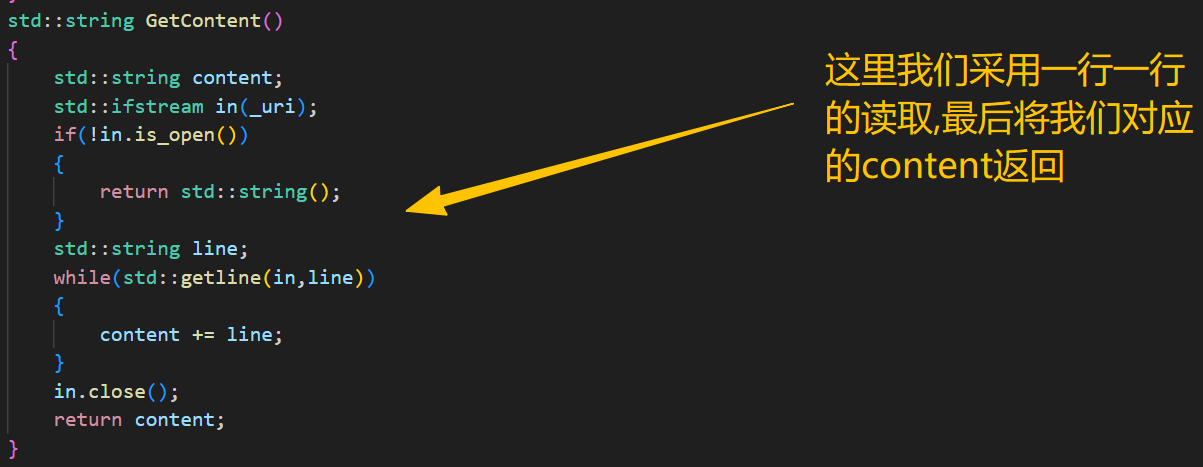
4.HttpResponse的实现
a.基本返回实现
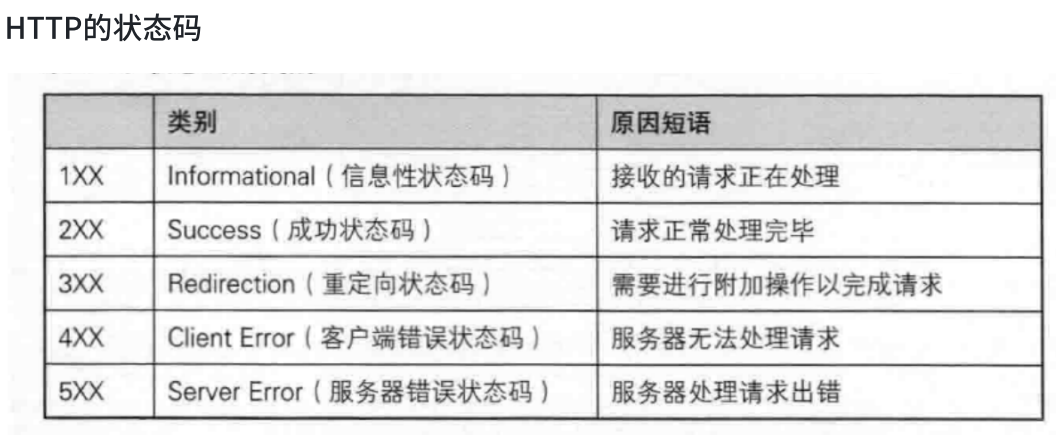


对于浏览器和服务器的http版本来说,一般是不同的,我们传递消息时,一定要将该版本进行交换
对于我们的返回信息,要包含状态码和对应的状态状态码对应的string值
//对于http来说,任何请求都要有对应的应答
class HttpResponse
{
public:HttpResponse():_version(http_version),_blank_line(Sep){}~HttpResponse(){}void Build(HttpRequest& req){_content = req.GetContent();if(_content.empty()){//当前用户请求资源不存在_status_code = 404;req.SetUri(page404);_content = req.GetContent();}else{_status_code = 200;}_status_desc = CodeToDesc(_status_code);}void Serialize(std::string* resp_str){_resp_line = _version + LineSep + std::to_string(_status_code) + LineSep + _status_desc + Sep;_body = _content;//序列化*resp_str = _resp_line;for(auto& line : _resp_header){*resp_str += (line + Sep);}*resp_str += _blank_line;*resp_str += _body;}
private:std::string CodeToDesc(int code){switch(code){case 200:return "OK";case 404:return "Not Found";default:return std::string();}}
private://必备的要素std::string _version;int _status_code;std::string _status_desc;std::string _content;//最终要这四部分,构建应答std::string _resp_line;std::vector<std::string> _resp_header;std::string _blank_line;std::string _body;
};

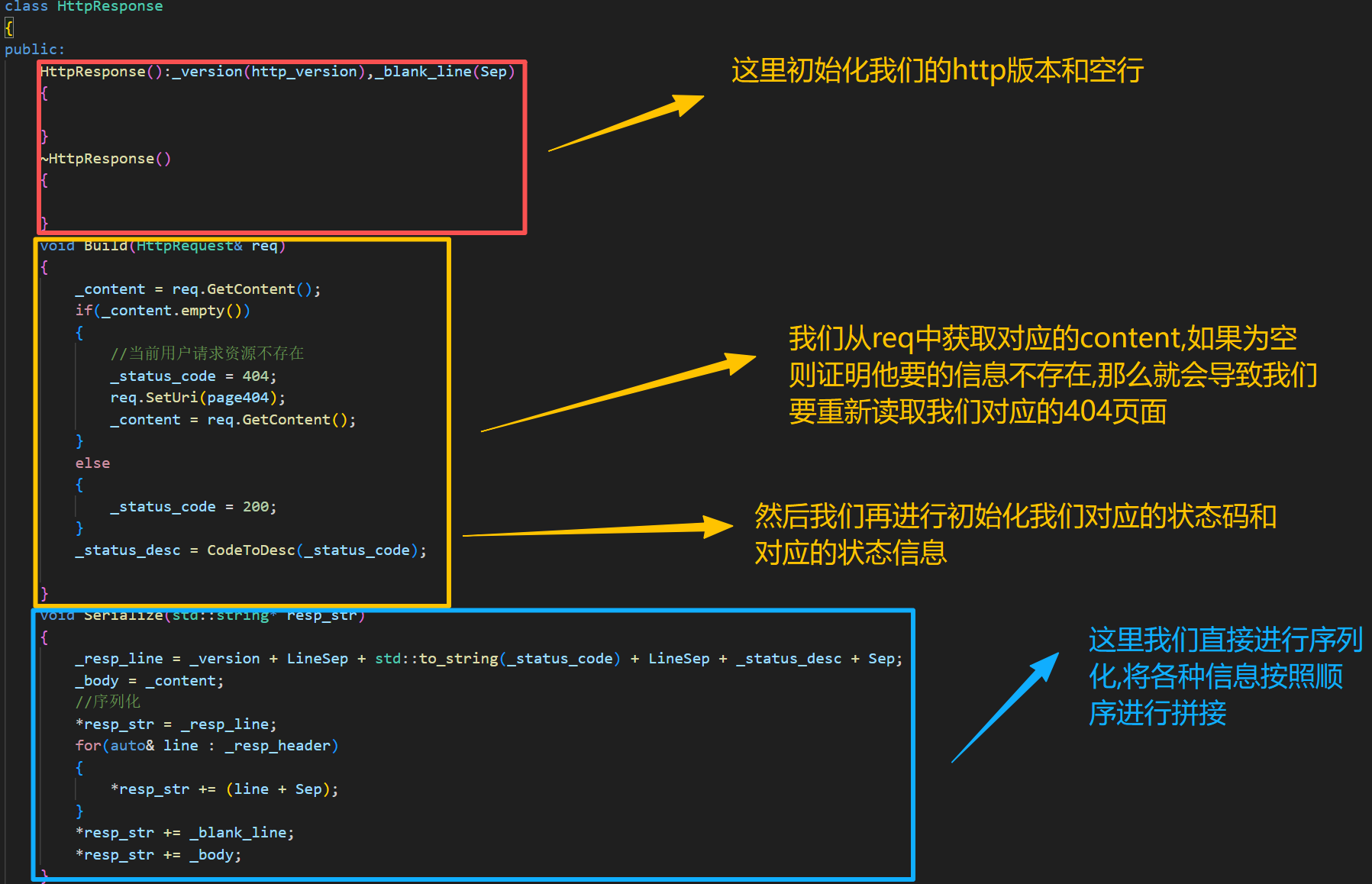




浏览器显示如下:

b.访问\时添加默认路径
void Build(HttpRequest& req){std::string uri = req.Uri();// wwwroot/ -> wwwroot/index.html// wwwroot/a/b -> wwwroot/a/b/index.htmlif(uri.back() == '/'){uri += firstpage;req.SetUri(uri);}_content = req.GetContent();if(_content.empty()){//当前用户请求资源不存在_status_code = 404;req.SetUri(page404);_content = req.GetContent();}else{_status_code = 200;}_status_desc = CodeToDesc(_status_code);}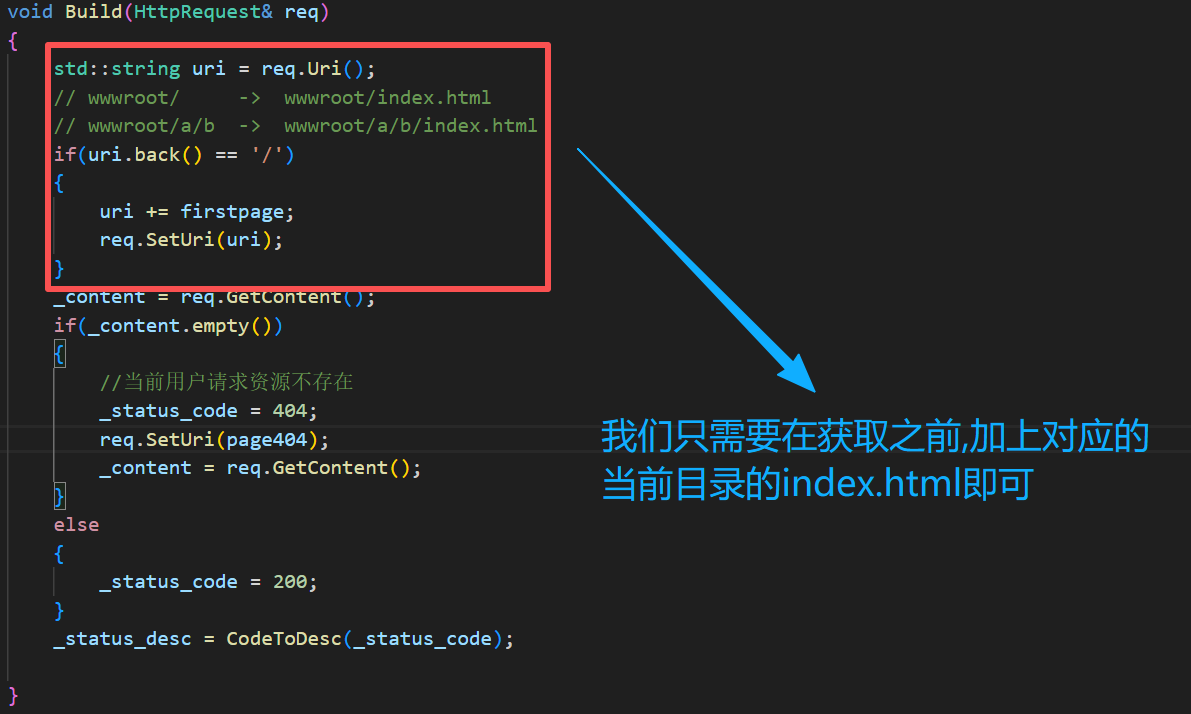

前端开发主要是写wwwroot内部的内容,而我们后端开发,主要就是开发wwwroot外面的内容
我们通过图标来去向浏览器发送新的请求,是通过前端的<a>标签进行的

我们这里多加几个网页(AI生成即可)



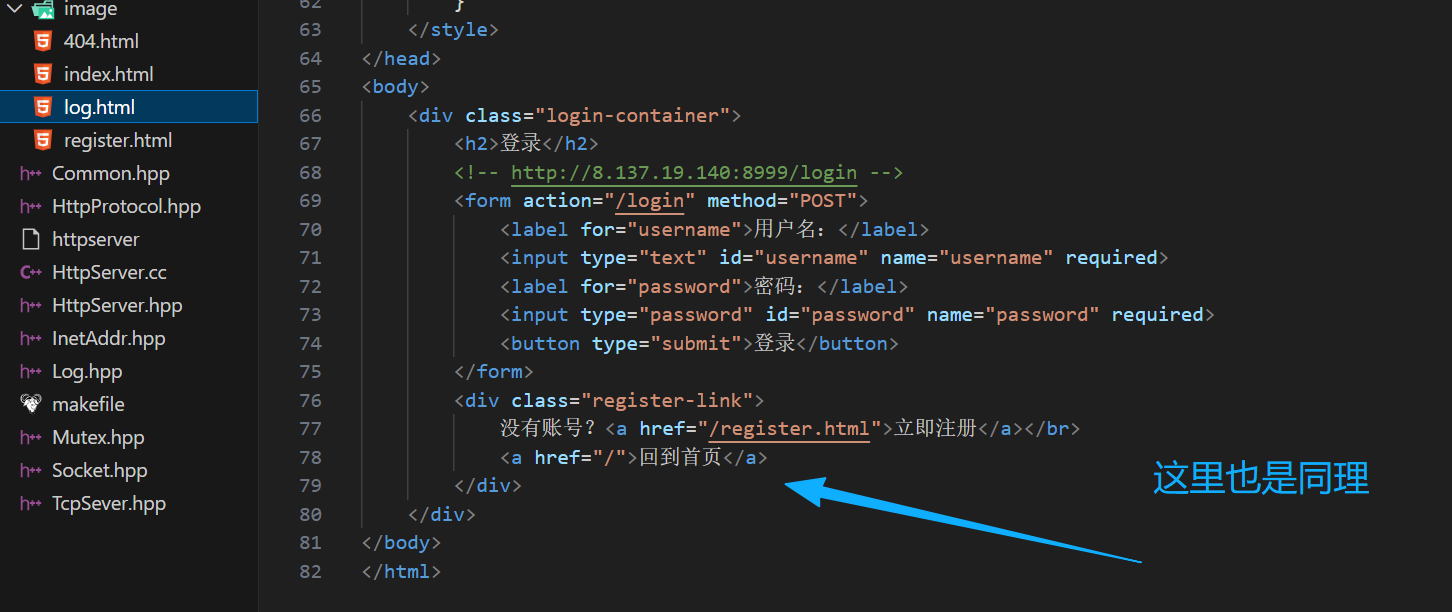
5.http的其他字段
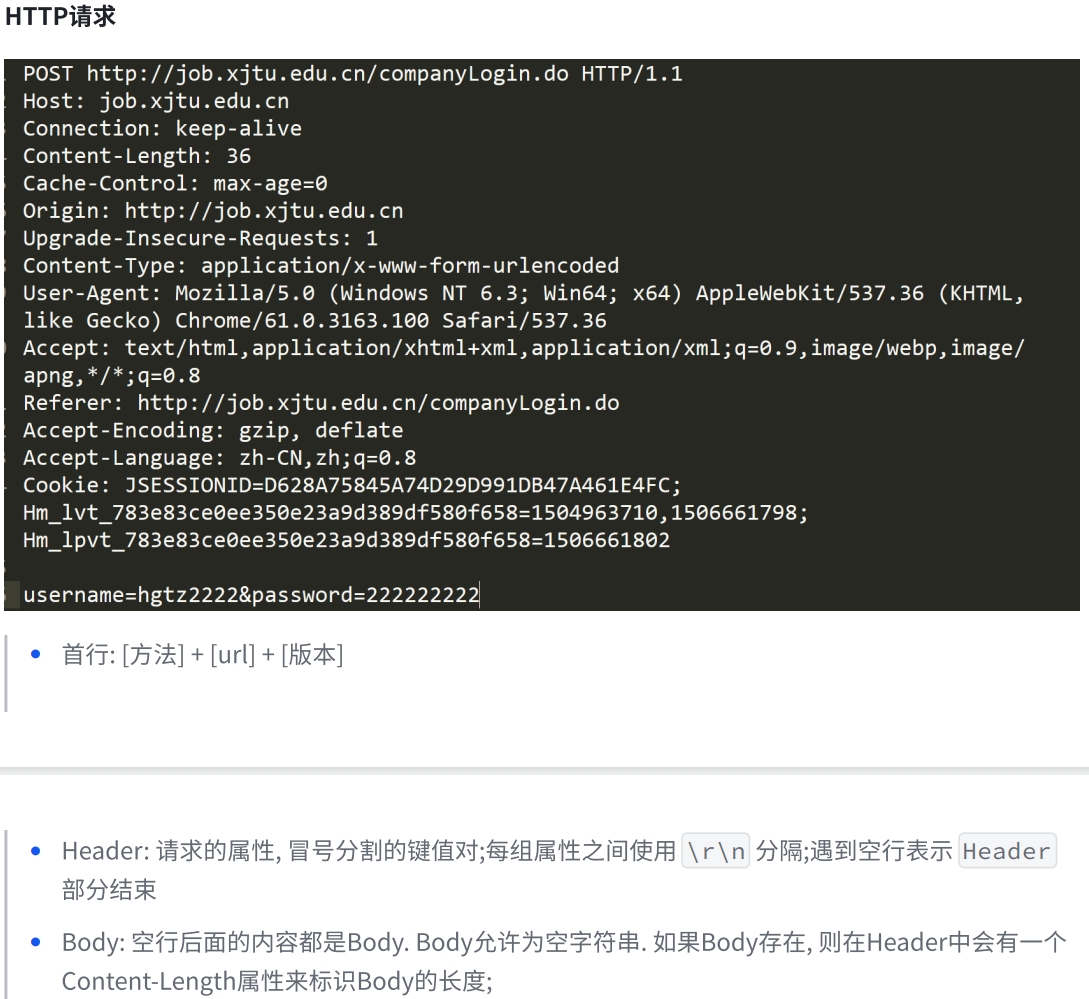
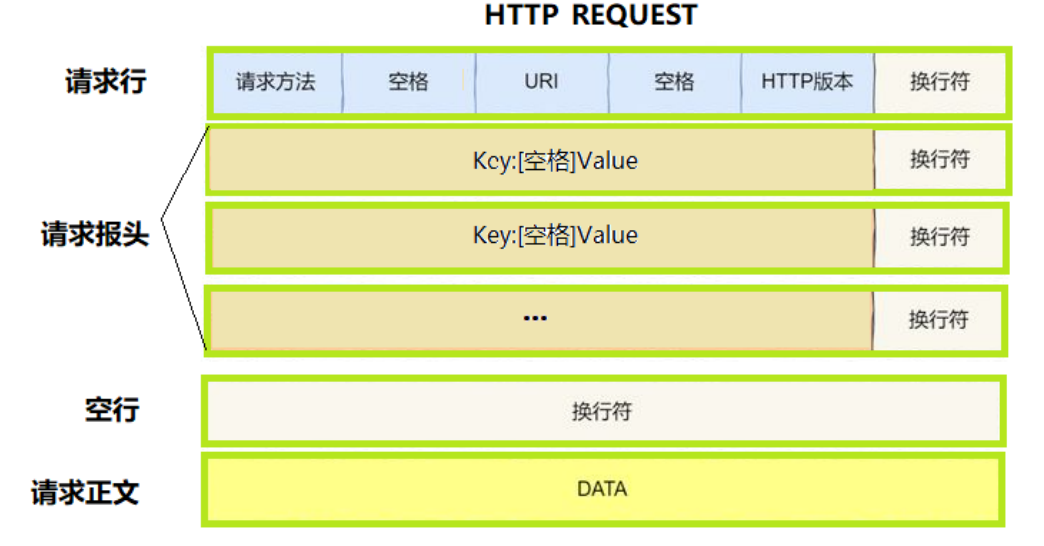

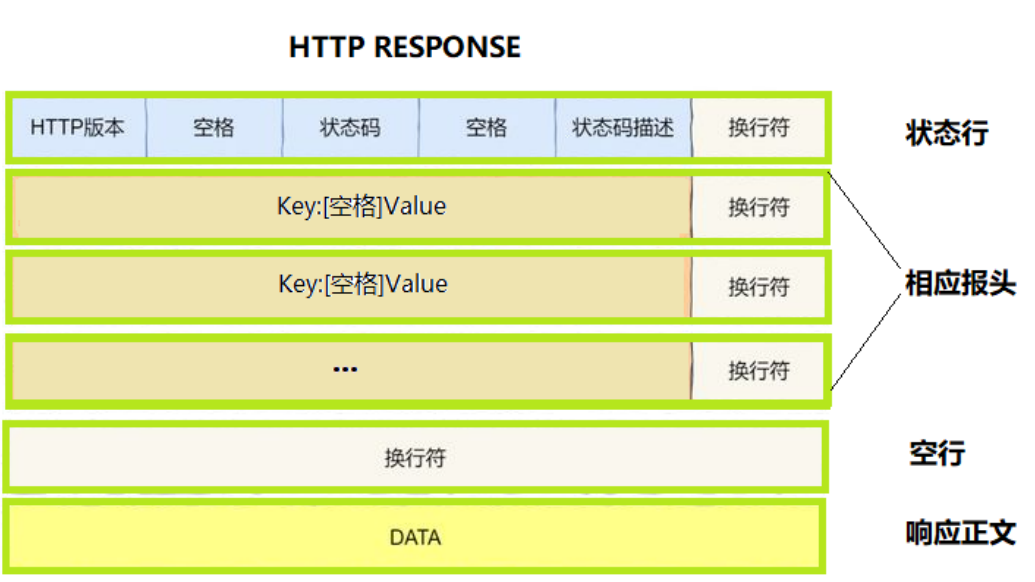
添加请求报头
void SetHeader(const std::string& k,const std::string& v){_header_kv[k] = v;}void Build(HttpRequest& req){std::string uri = req.Uri();// wwwroot/ -> wwwroot/index.html// wwwroot/a/b -> wwwroot/a/b/index.htmlif(uri.back() == '/'){uri += firstpage;req.SetUri(uri);}_content = req.GetContent();if(_content.empty()){//当前用户请求资源不存在_status_code = 404;req.SetUri(page404);_content = req.GetContent();}else{_status_code = 200;}_status_desc = CodeToDesc(_status_code);if(!_content.empty()){SetHeader("Content-Length",std::to_string(_content.size()));}for(auto& header : _header_kv){_resp_header.push_back(header.first + HeaderLineSep + header.second);}}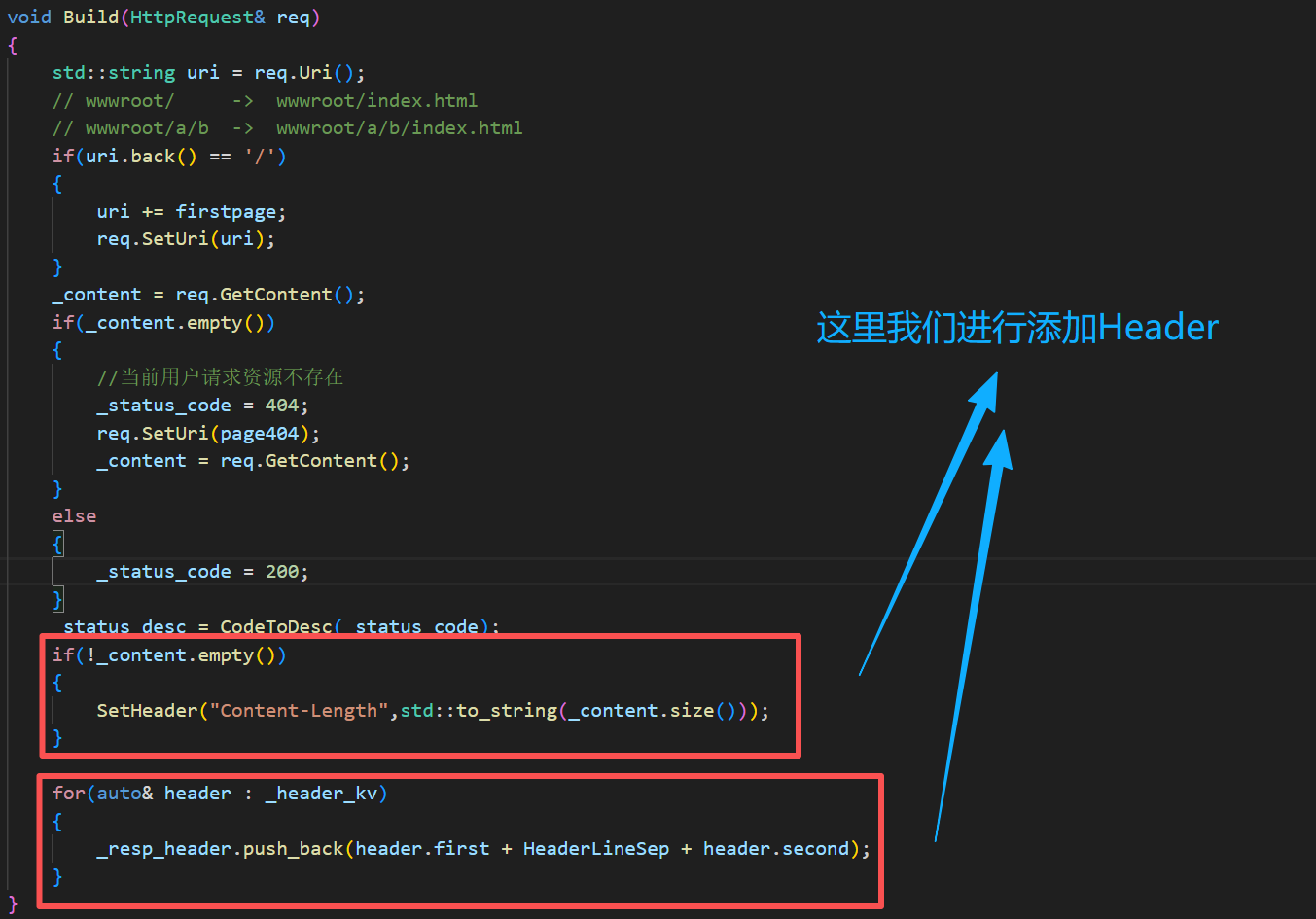

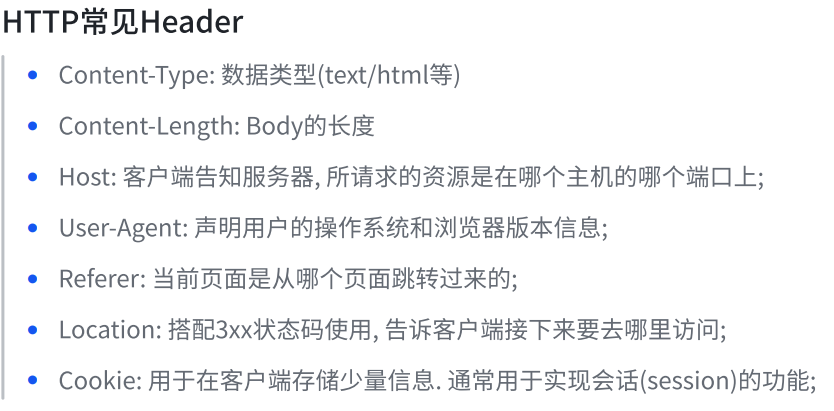

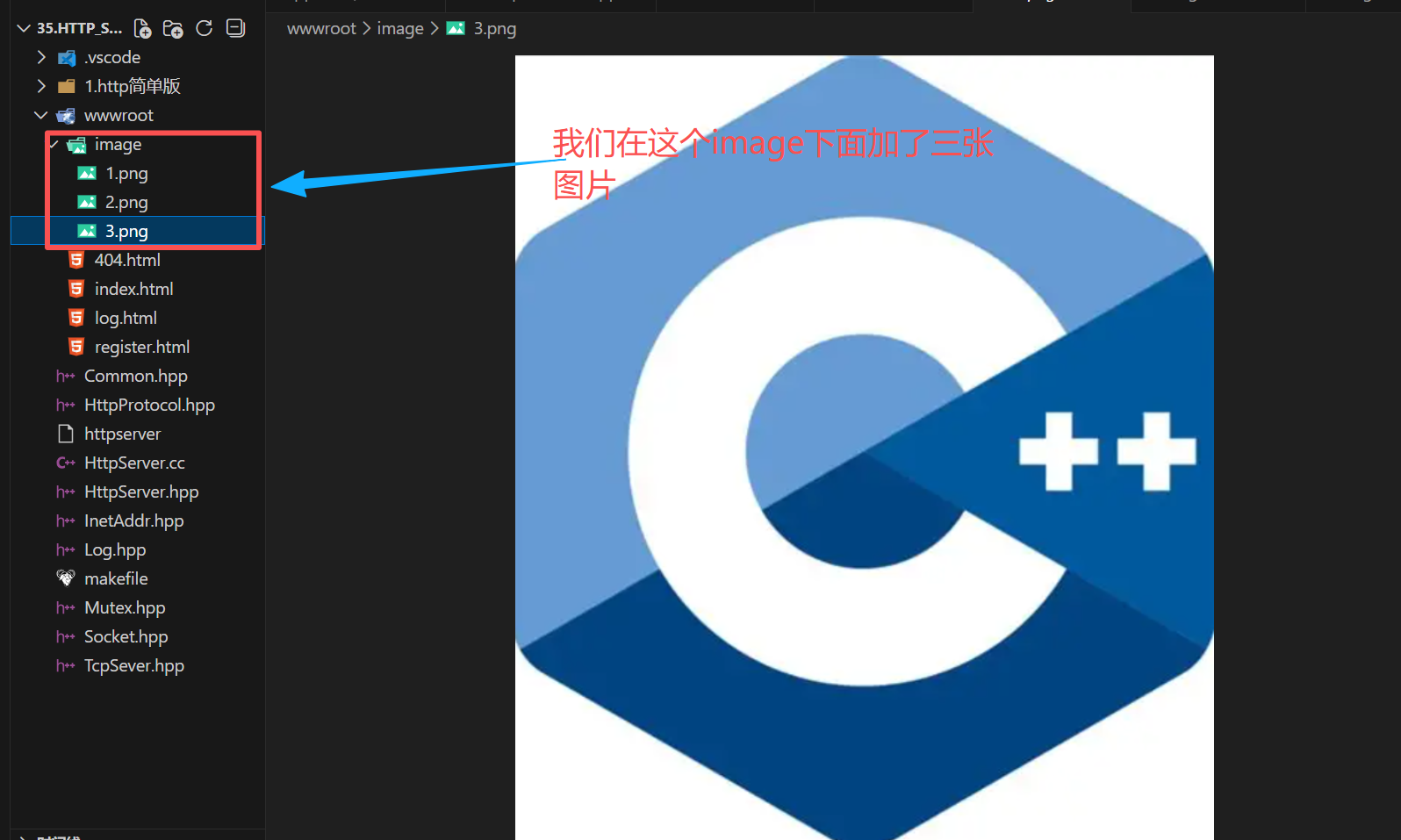
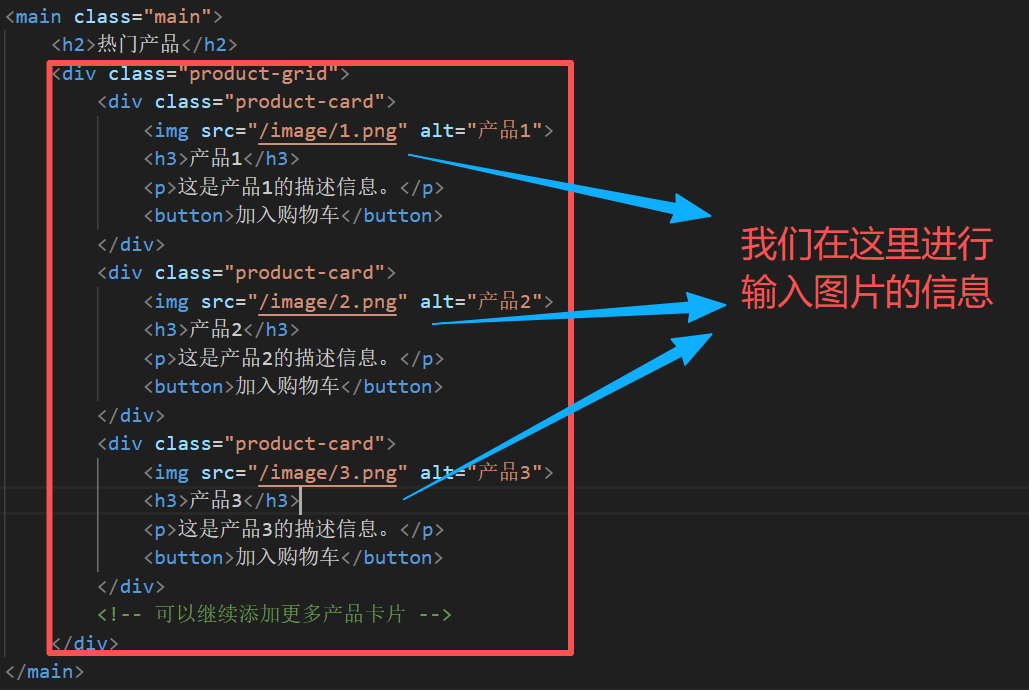
但是我们看不到是怎么回事?

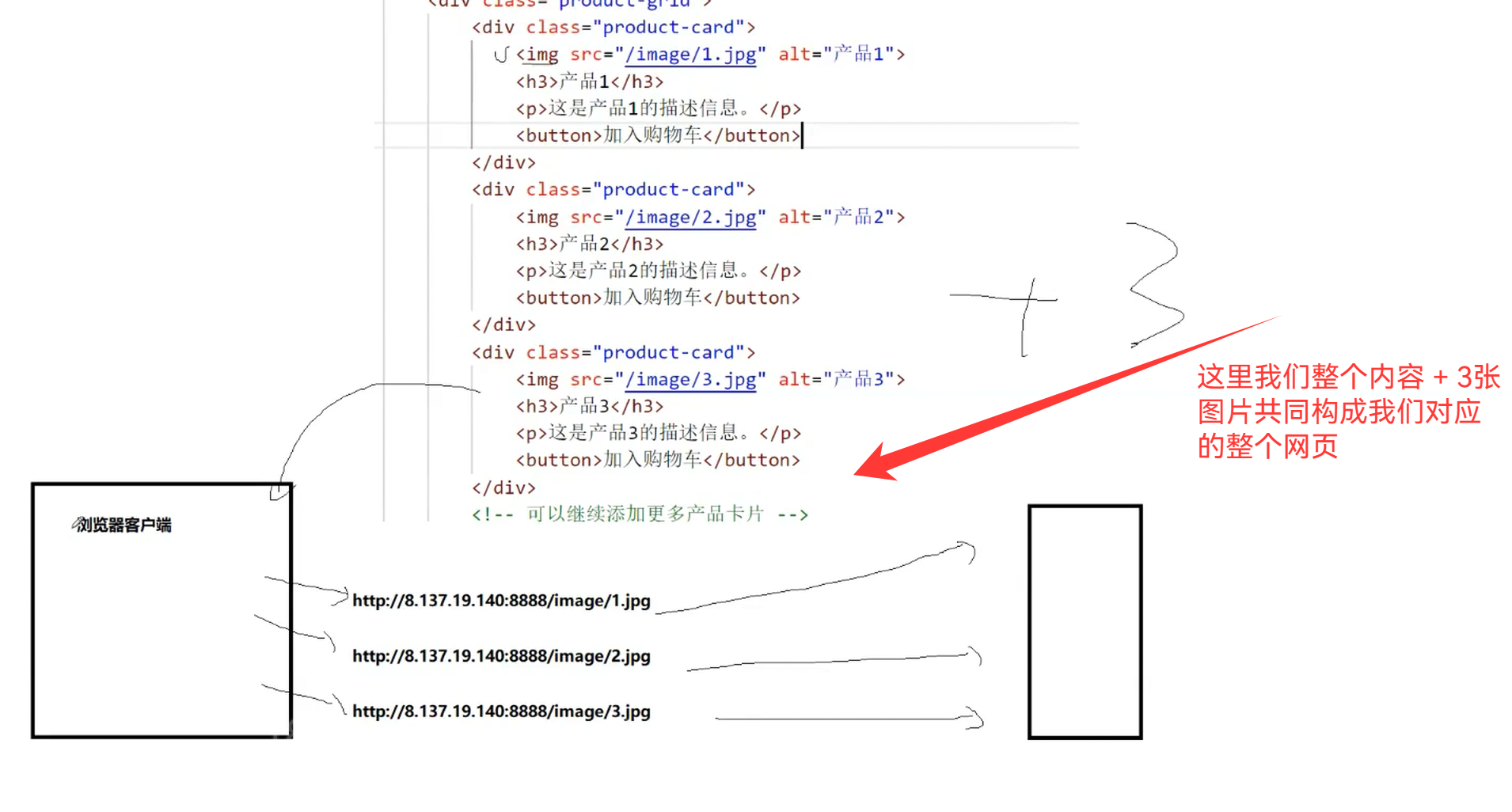

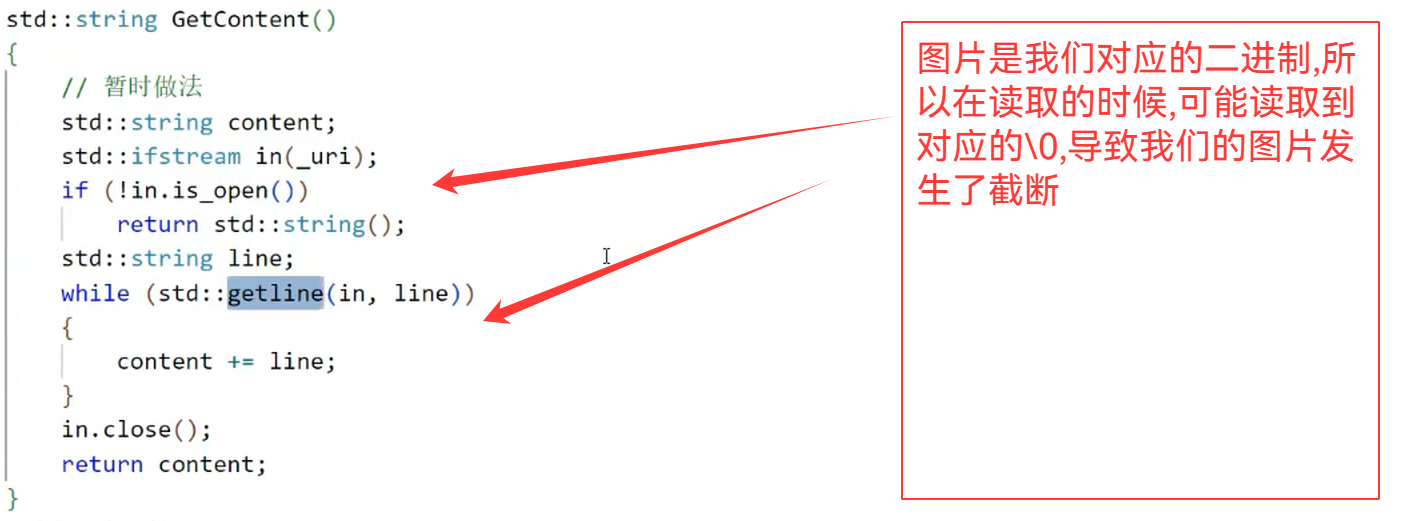
所以我们可以采用二进制读写(文本和图片都能可以进行读取)
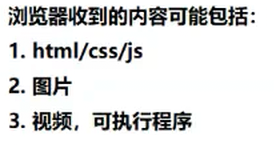
std::string GetContent(){std::string content;std::ifstream in(_uri,std::ios::binary);if(!in.is_open()){return std::string();}in.seekg(0,in.end);int filesize = in.tellg();in.seekg(0,in.beg);content.resize(filesize);in.read((char*)content.c_str(),filesize);in.close(); return content;}我们现在是任何的访问内容都是给其返回一个字符串,浏览器自己可以进行解析(图片还是文本),但是我们的返回字段中,要加上对应的内容信息

std::string Suffix(){auto pos = _uri.rfind(".");if(pos == std::string::npos){return std::string(".html");}return _uri.substr(pos);}

这里的转换,我们可以直接简单设计一下
std::string SuffixToDesc(const std::string& suffix){if(suffix == ".html"){return "text/html";}else if(suffix == ".png"){return "image/png";}return "text/html";}

